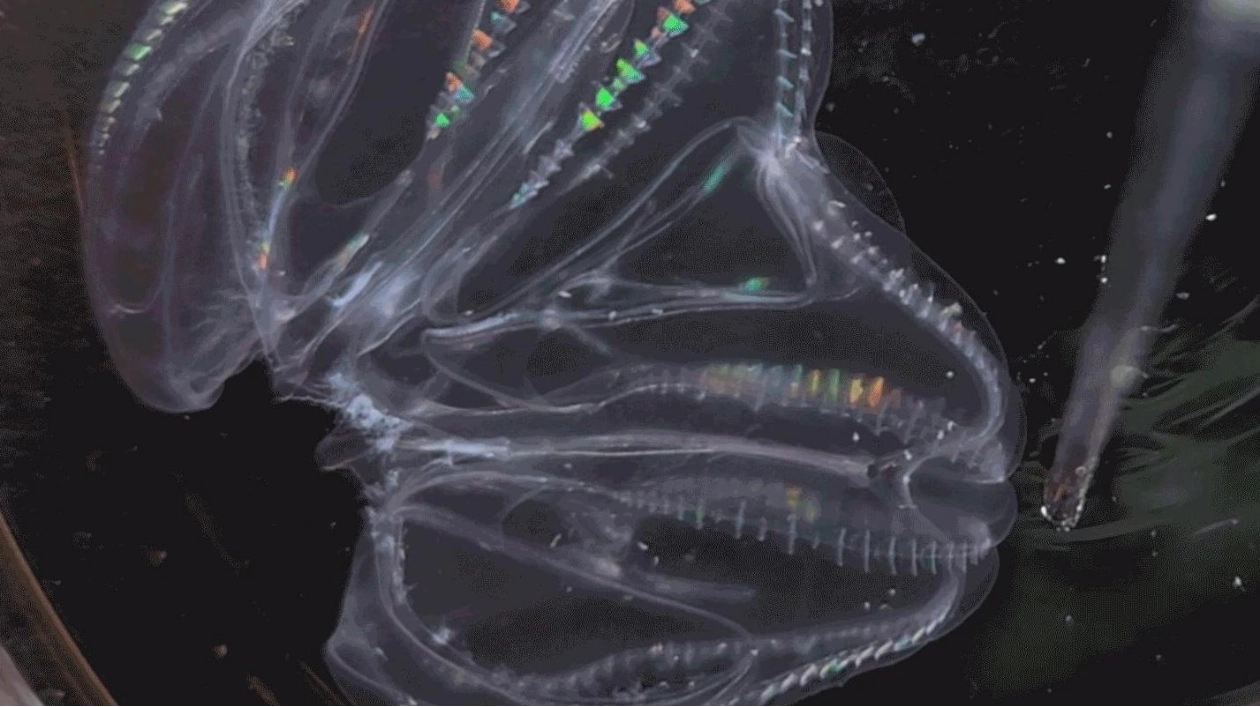In a remarkable display of biological adaptability, a small, gelatinous marine creature has the ability to merge its body with a neighboring one. These creatures, known as sea walnuts or comb jellies, can synchronize their bodily functions after merging, according to a study published on October 7 in Current Biology. Biologist Kei Jokura initially discovered this phenomenon when he observed an unusually large sea walnut (Mnemiopsis leidyi) in a collection tank, which turned out to be two jellies fused together. Jokura, who conducted this research while at the Marine Biological Laboratory in Woods Hole, Massachusetts, hypothesized that the fusion occurred due to injuries sustained during collection and the close quarters in which they healed. Comb jellies are renowned for their regenerative abilities, but the sight of two attached jellies piqued Jokura's curiosity.
"At first, I was very surprised," says Jokura, who is now at the National Institutes of Natural Sciences in Okazaki, Japan. He then decided, "Let's try to reproduce this under the microscope." Jokura and his team took pairs of comb jellies, trimmed a piece from each, and pinned them to dissection dishes with their cut ends touching. In nine out of ten pairings, the injury sites fused overnight, creating a continuous stretch of tissue. The fused jellies not only appeared as one organism but also behaved as such. When prodded on one side, both bodies responded by contracting, suggesting that their nervous systems might have fused as well. Additionally, both bodies shared food, even though only one mouth was fed.
Given that comb jellies are dispersed in the open ocean, fusion likely occurs only in laboratory settings, according to Steven Haddock, a marine biologist at the Monterey Bay Aquarium Research Institute in Moss Landing, California. Haddock has observed another species, the sea gooseberry (Pleurobrachia pileus), fuse after collection, but not in a synchronized manner. "Nothing like this, where they're coordinating their reactions," he says. "It's pretty remarkable." The sea walnuts' fusion ability indicates that these animals lack the ability to distinguish between their body and another, a trait known as allorecognition. In humans, allorecognition can cause organ transplant rejection. As one of the oldest lineages of animals, comb jellies' lack of allorecognition in sea walnuts might provide insights into how this trait evolved. However, Jokura notes that further research is needed to understand the neurology and genes responsible for this phenomenon.






